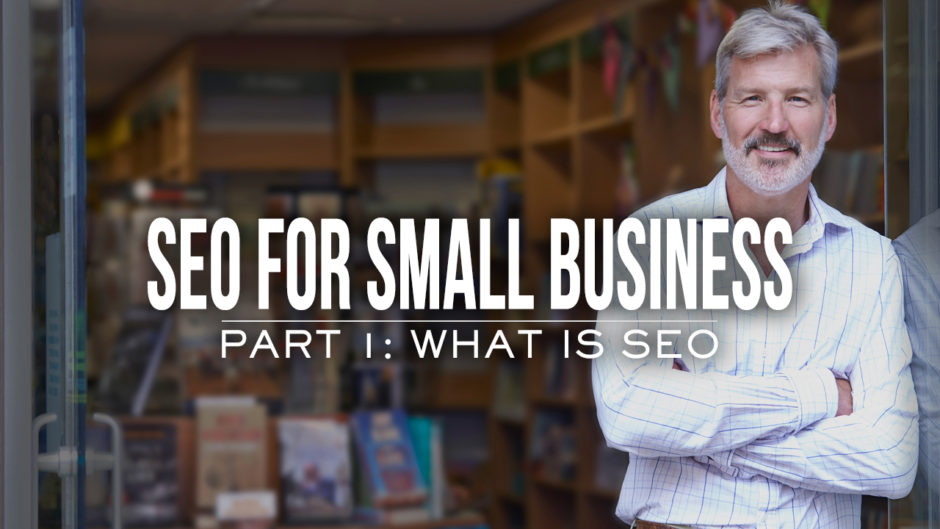
Today we’re going to talk about SEO for small and mid-sized businesses. In both your personal and professional lives, when you have a question, need an idea or are looking for information or inspiration, what do you do? Well, if you’re like most people – you Google it. But did you also know that according to research 81% of online shoppers, and sometimes even more surprising, 89% of B2B buyers do the same thing? When we have a question, when we’re looking for a product or when we’re trying to decide between two options – we Google it.
So what does this mean for your website? It means that if you don’t have a strong presence in Google, your business is unlikely to succeed. I’m putting together this series of articles to help you understand Search Engine Optimization (SEO) and show you how to build an online presence.We’re going to talk about how SEO for Cleveland small businesses works and what are the steps you have to take to help your website rank better in search engine result pages (SERPs).
You may have already tried to do research about this, or watched some videos and found it to be complicated – so I promise to keep things simple.Yes, there is a complex, technical aspect to this, but the truth is that just like the fact that you don’t need to know how every component of your car works to be a good driver, you don’t need to understand the intricacies of exactly how search engines and the algorithms work, in order to succeed.
I’m going to break down SEO into simple parts, and guide you through the construction of an SEO strategy for your business.
When you strip away all of the jargon and buzz words, SEO is a process designed to improve a website’s visibility in organic search results. The goal of SEO is to help your website rank higher in SERPs, or Search Engine Result Pages, so that it appears in front of more people, drives more visitors to your website and improves your chances of converting those visitors into clients. SEO strategy is an ongoing plan that uses simple tactics to help achieve that goal. And I want you to pay attention to the “ongoing” part of that statement because a successful SEO strategy is not a one and done proposition – it’s an ongoing process.
When we develop websites, we don’t offer initial SEO as a separate line item, it’s always included. It doesn’t make sense for a company to invest in a beautiful and user-friendly website if no one can find it. So while we generally see a drastic improvement in search rankings when we publish one of our websites, we generally encourage our clients to maintain and ongoing SEO strategy for continued improvement.
Ok, so now that we discussed what SEO is, let’s get to the why it’s important part – because it goes beyond just visibility. With very few exceptions, people use search engines more than any other marketing channel, to find and select products or services. More people use Google than Amazon, more people use Google than review sites like Trip Advisor and Angie’s list, and even B2B clients conduct, on average, double-digit searches before engaging with a brand. So whether you’re a manufacturer, a small lodging establishment, a yoga studio or a tree service company, If you’re not showing up in search engines, you’re losing potential clients to a competitor.
Some business owners have said to me, that “their clients don’t use Google to search for their product or service”. And while this may have some truth in very limited cases, the vast majority of potential clients use search engines at some part of the buying process. For most people, the buying process begins with Google, where they may search for a product, service or a solution to a challenge. Once they identify some choices, they may reference Social Media and review websites to help make a decision – but this is after the search process.
This is why it’s important that your website appears in search engine result pages AND that your website is designed in a way that represents your brand in an engaging and memorable way and converts visitors to leads. After all, there is no point in doing all of this work if the visitor takes one look at your website and leaves.
Alright, so this concludes part 1 of our Small Business Website SEO series, in part 2 we’ll cover how Google ranks web pages. I really hope I was able to give you a good overview of what SEO is and why it’s important to your small business. If I did, please let me know by giving this article a thumbs up, tweet it, share it, and if you haven’t yet, join the community by hitting the subscribe and notification buttons. If you have any questions about Search Engine Optimization for Small Business, please put them in the comments section below and I’ll do my best to help you.
For more branding, marketing, web design and SEO tips and tutorials, you can find us on Instagram, Twitter and Facebook.
Good luck and see you soon.